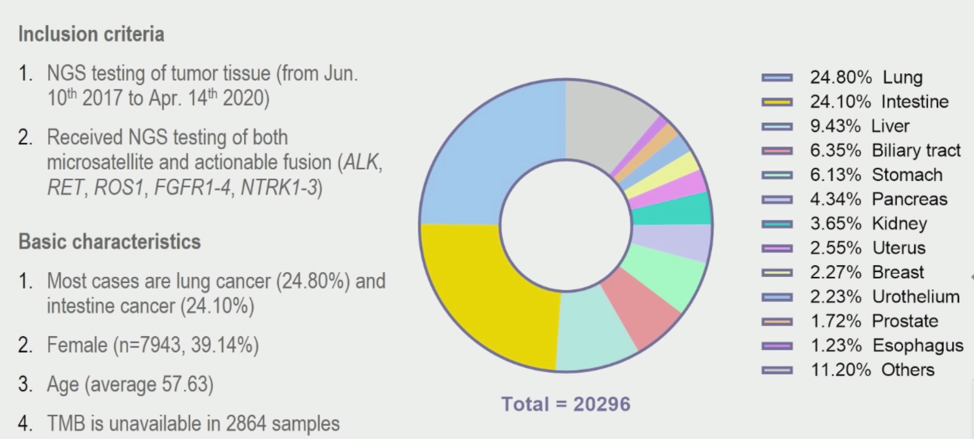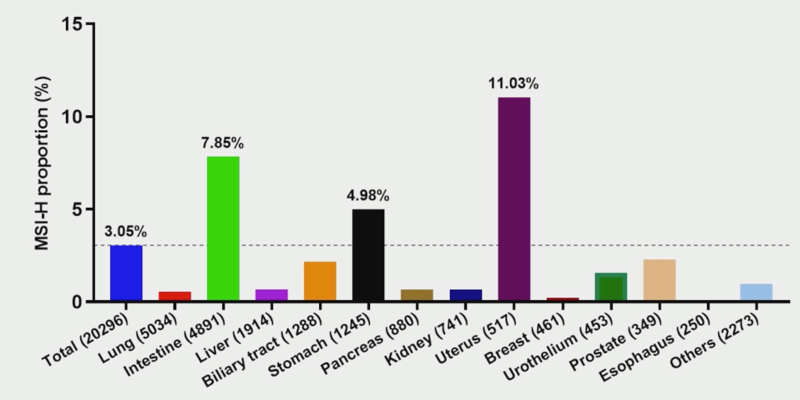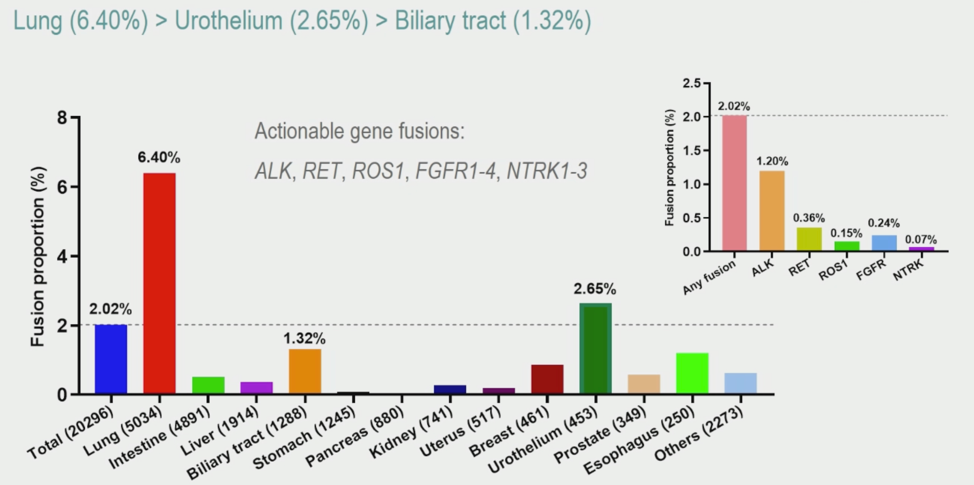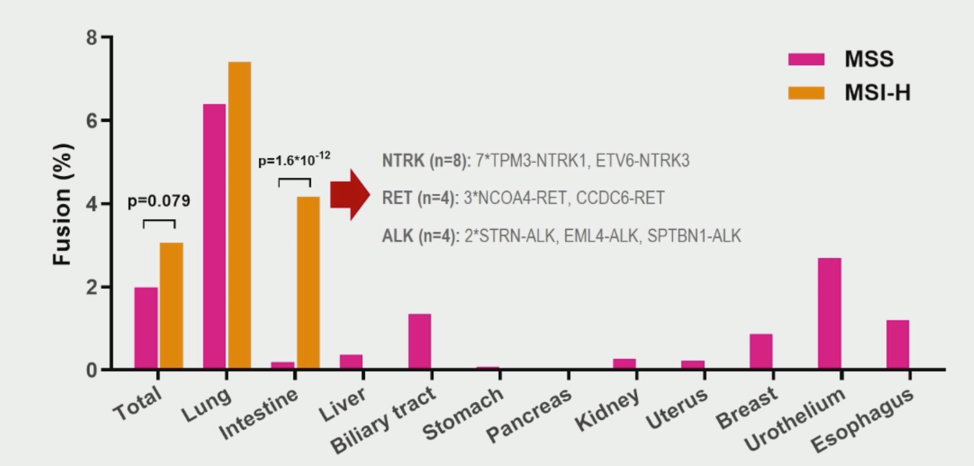The cohort is shown below. Fusions that were considered actionable include those involving ALK, RET, ROS1, FGFR1-4 and NTRK1-3 genes.

The incidence of MSI-H status was highest in the uterine cancer subcohort (11%). No information was provided regarding how MSI status was ascertained.

The incidence of actionable fusions is shown below, with lung cancers harboring the highest incidence of these genomic events (6.4%). ALK mutations were the most common fusion detected across all samples.

The greatest differences in fusion status with microsatellite status was observed in intestinal cancers. Only 0.2% (9/4507) of microsatellite stable intestinal cancers had actionable fusions, but 4.2% of MSI-H (16/384)patients harbored actionable fusions, predominantly in NTRK.

Cases with both MSI-H and actionable fusions were profiled for mRNA expression of immune-related genes, with a suggestion of higher expression levels of TMEM173 as well as multiple MHC II genes.

These results provide additional information regarding the incidence of high levels of microsatellite instability and certain genomic fusions across a variety of cancer subtypes, and identify specific rates of co-occurrence between fusions and MSI-H. These cases show up-regulation of certain immune-related genes even relative to MSI-H tumors lacking the fusions, with potential consequences for response to immunotherapy.
Presented by: Tao Fu, Peking University Cancer Hospital, Beijing, China
Written by: Alok Tewari, MD, PhD, Medical Oncologist at the Dana-Farber Cancer Institute, at the 2020 European Society for Medical Oncology Virtual Congress (#ESMO20), September 19th-September 21st, 2020.


